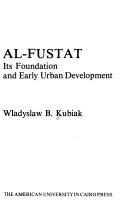Exploring Local Activism In The Neighborhoods Of Cairo
Aya Elwageeh, Reinout Kleinhans, Maarten Van Ham.

Overview
Governments are focusing on building new cities to control rapid urbanization and accommodate overpopulation in Africa. Meanwhile, existing agglomerations suffer from urban deterioration, much to the dissatisfaction of their residents. Cairo is an exemplary case of active residents’ response toward urban deterioration in their neighborhoods, resulting from local government deficiencies accompanied by a hostile culture toward citizen engagement. In this context, active residents use social media to share concerns, mobilize each other, and act on the ground. These active groups are likely to differ from local activism practices in contexts where a culture of citizen engagement is often state-supported. This paper aims to better understand how local activism manifests in the context of Cairo and its neighborhoods. We identified active resident groups and observed their main activities and aims. We subsequently analyzed the active resident groups’ level of formality, confrontational attitude, collaboration with local officials, and motives. We found that many active groups practice local activism as a right to a certain urban quality within the neighborhoods. They were either self-provisioning groups that confront and ultimately cooperate with local officials, advocacy groups that demand accountability and action from local officials in a less confrontational manner, or user groups that settle for online criticism




















